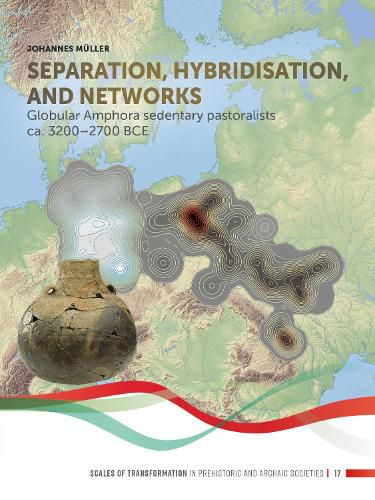Separation, hybridisation, and networks
Johannes Mueller

Separation, hybridisation, and networks
Johannes Mueller
Around 3000 BCE, a turning point occurred in Europe: Long-existing regional societies entered into a process of transformation. The result is a world in which new global communication networks brought different regions closer together. From 3200/3100 BCE, the Globular Amphora phenomenon (GA) was the trailblazer in Eastern and Central Europe. Due to a focus on pastoral subsistence, in comparison to more agrarian economic systems, new ritual practices formed in light of a more flexible form of settlement. We initially observe the symbolic separation manifested through the ?Globular Amphora? in an area between the Lower Vistula and Middle Elbe. Communication networks form rapidly in the West (the Elbe-Network) and in the East (the Vistula-Podolia Network). The monopolisation of the practice of double cattle burials connected regional patterns of mobility in the lowlands between the Elbe and the Dniester. With the aid of spatial analyses of the systems of symbols (Zeichensysteme) on locally/micro-regionally produced Globular Amphorae, a proxy is developed for the degree of similarity of the GA-habitus in different regions. Bayesian modelling and spatial visualisations of the radiometric dates indicate temporal sequences and synchronic changes within the newly-developed ?global? GA-connectivity. Genetic analyses attest to the indigenous character of the GA individuals in Central Europe. Both isotopic and ceramic technology analyses provide evidence for a mobility radius of up to 50 km for the local groups. In the main phase of the GA, the Elbe and Vistula-Podolia networks appear separated. In the West the core areas are in Bohemia/Moravia, the Middle Elbe-Saale-Havel area, and the north-western Baltic areas; in the East, they are along the Vistula, in Podolia-Volhynia, and in the Siret area. GA networks are mostly symbiotically connected with the local and regional agricultural groups. The GA is, among other things, heavily involved in the formation of the multicultural Corded Ware phenomenon. Its end in 2600 BCE is linked to processes of change which also affected the change from Corded Ware to the Bell Beaker phenomenon. Only in the eastern areas, where a strong reciprocal influence with elements from the Steppe existed, can GA still be found until c. 2400 BCE. The emergence of the GA networks is described as social separation on the basis of social disharmonies within the Funnel Beaker societies, which is also visible via a reduction of the human impact in the palaeoecological archives. A new connectivity of diversified groups developed as a form of levelling mechanism, which in the long-term was part of the transformation of the entirety of European prehistory around 3000 BCE.
This item is not currently in-stock. It can be ordered online and is expected to ship in approx 4 weeks
Our stock data is updated periodically, and availability may change throughout the day for in-demand items. Please call the relevant shop for the most current stock information. Prices are subject to change without notice.
Sign in or become a Readings Member to add this title to a wishlist.


